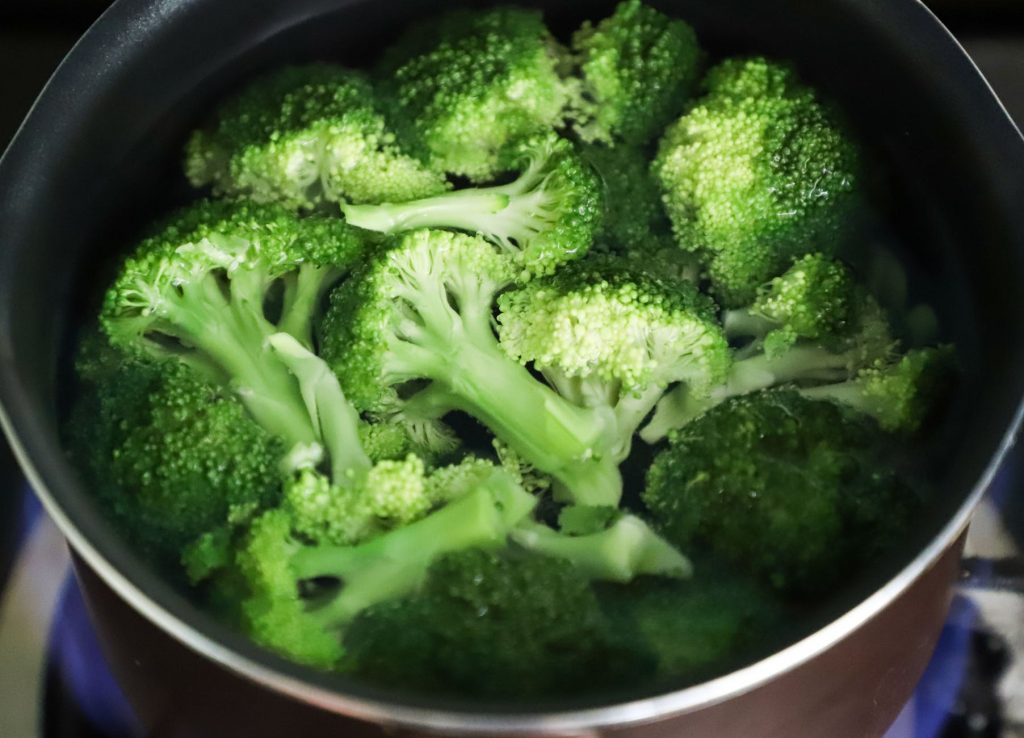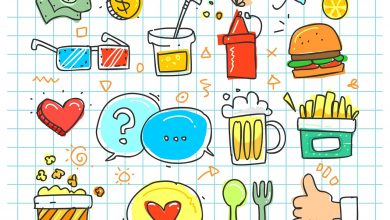
The Top 20 Ways To Eat Healthy When Dining Out
Eating out is fun, and it is a great way to socialize as well. The wide range of food choices is, of course, an added plus. People eat out for a variety of reasons. Some might prefer it, while some might not. While eating out is surely convenient, especially for people who are always on the clock and want to save time, it is not the best thing for your digestive system. Unlike a hearty home cooked meal, restaurant meals tend to overdo on the seasonings and the spices and are not really your best friend when it comes to weight loss. Even if you choose to go for a simple salad, remember that the dressing comes with its own share of calories. So how do you keep track of what you eat and how much when eating out?
In this article, we share with you the top 20 ways to eat healthy when eating out. Additionally, we share a glimpse of the effect of fast food on your overall health and tips on how you can improve your overall digestion. A strong digestive system will ensure you can easily digest the food you are eating even if you are eating out way more than you’d prefer.

How Eating Out Affects Your Overall Health
While some people go out to eat out of choice, others do it because they don’t have time to cook a meal at home. Restaurant food has this unique feature; they also have a lot of options, and they taste awesome, consistently. For professionals who are on the clock all the time, grabbing a quick bite at the restaurant or ordering in seems to be the easiest option. They often even end up having all their meals out. Unfortunately, nobody really has the time or budget to spend on gourmet meals every day. So turning to French fries, fried chicken, burrito rolls, and pizzas becomes the everyday mantra. But with every good-tasting burrito roll or pizza comes a few side effects.
Regular consumption of fast food does not only affect the digestive system. It also takes a toll on the overall functioning of the body. You would be surprised to know that fast food does not only affect your digestive system, but your cardiovascular, nervous, respiratory, reproductive, and the integumentary system. Here’s a look at how eating out might be affecting your body in ways you couldn’t even imagine.
Headache: It starts with the simplest of all, the unsuspecting headache. Eating out exposes you to foods full of sodium, which increases the frequency of headaches.
Acne: Contrary to popular belief, it is not fat but carbs that lead to acne. When the refined carbs in burgers, pizzas, and French fries are broken down, they are absorbed quickly into the bloodstream. This spikes the level of sugar in the blood, which in turn leads to more insulin getting pumped into the blood to get rid of the increased sugar. And it is insulin that primarily causes acne breakouts.
Dental cavities: The sugar and carbs that fast foods contain produce acid that depletes precious tooth enamel, which is the hardest tissue in the body. The problem is teeth enamel cannot be regenerated either naturally or artificially. So once it is gone, it gone for good.
Shortness of breath: Fast foods pack in more calories than your average homecooked meal. Extra calories mean extra pounds, which require a lot of healthy eating and exercise to get rid of, gradually. This can spell fatigue in the short term and obesity in the long term, both of which can cause shortness of breath, trouble breathing, and wheezing.
High cholesterol: We all know that fried carbs are filled with what is known as trans fats. These are known to spike LDL (bad cholesterol levels) in the blood.
Heart attack or stroke: Increased levels of cholesterols in the blood may lead to blockages and clots in the arteries, which increase the chances of cardiovascular diseases including heart attack and stroke.
Obesity: Even when you think you are eating healthy while you are eating out, your calorie intake might still be way higher than you would guess. In fact, people who eat fast food on a regular basis, tend to ingest extra calories to the tune of 190 calories per day. This increased calorie intake results in fat storage, which leads to unintentional weight gain and obesity in the long term.
High-blood pressure: The high sodium content in fast foods does not only lead to headaches, but also increased blood pressure. In due time, increased blood pressure can lead to heart diseases and might also aggravate existing disorders, and in turn, lead to congestive heart failure.
Increased blood sugar: Fast foods pack in empty carbohydrates. These carbs are easily digested by the body and drawn into the blood stream in the form of sugar and fat. The excessive sugar in the blood stream leads to spikes in the overall blood sugar level, which alters the natural insulin response of the body. Frequent insulin spikes can result in insulin resistance and, in the long term, Type 2 diabetes.
Bloating: Bloating is one of the most common side effects of ingesting fast foods. This has again to do with the high sodium levels in fast food which leads the body to retain more water, resulting in feeling swollen, puffy, and bloated.
With this glimpse into how eating out regularly might impact how the body functions in the long term, it only makes sense to decide against eating out. However, in the current fast-paced life, that might not be an option for many. A study by the Bureau of Labor Statistics shows that millennials spend about 45% of their food budget on eating out. Also, the average American family spends half of their food budget on eating out.
While eating at least one to two home cooked meals is highly recommended, but if you are unable to do so, your next best alternative is to find out how you can eat healthy when you are eating out.
Top 20 Ways to Eat Healthy When Eating Out
While eating a warm and wholesome home cooked meal may be the best choice, it might be not an option for many. Whether you are stuck at work for long hours or travelling to a distant destination for work or pleasure, you will invariably be pushed to eat out. Although eating out might have its share of adverse effects, if you do it right, you can bypass its ill-effects.
Here are 20 tips on how you can eat out and still keep a watch on those calories and your nutrient intake.

1. Go through the menu before you get to the restaurant.
This gives you a much-needed head start. When eating out, you might often feel pressured into making your food choices quickly and without much thought. This might happen because you are already hungry, and you know it will take time to prepare the meal, or others at the table have already decided on what to order, and you end up making a biased choice as well. Distraction at the restaurant doesn’t let you study the menu well to find out the healthiest dish among them all. So going through the menu and deciding on what you are going to have before you leave for the restaurant is the first step to eating healthy when eating out.
2. Snack before you reach the restaurant.
Although it might seem counterintuitive, eating a healthy snack before you reach the restaurant will help you feel full and keep you from overeating. It will also help you from ordering a high-calorie dish since you feel less hungry. Choose an organic protein bar sans additives or yogurt with berries to snack on before you arrive at the restaurant.
3. Avoid buffets.
Given the option, always try to go for a-la-carte. However, if an “all-you-can-eat” buffet is your only option, then you might need to watch what you eat. The sheer spread and unlimited quantity might weaken anyone’s resolve. The best way to deal with such a buffet is to use a small plate and fill a third of it with salads and vegetables. Avoid going for multiple rounds and try to sum it up with a plate and a half.

4. Drink lots of water.
Water is yet another great way of making you feel full while keeping you hydrated. It also keeps you from eating more calories than required. You can also opt for water instead of sweetened drinks or juices while you are eating out. This keeps thirst at bay while also helping you keep a watch on those calories. Studies have shown that people who drink half a liter (500 ml) of water half an hour before their meals tend to lose 44% more weight than ones who don’t.
5. Order before others.
If you are out having your lunch or dinner with people who are not on a diet or not keen on healthy eating options, try to decide on your dish and order it before them. It is easy to be influenced by the choices of others at a restaurant. Avoid this by deciding what you want and ordering it first.
6. Opt for appetizers instead of a main course.
Main courses comprise bigger portions that pack in more calories. Try and order two appetizers instead. This will give you two different food choices instead of one and will also be just enough to meet your meal requirements.
7. Share with someone.
If you indeed feel like ordering a main course, then you can also go ahead and share it. Otherwise, if the restaurant has the option, you can order a half portion, which is best suited for a single meal requirement. One of the best ways to cut back on calories and unwanted carbs is to limit what you are eating. Sharing your food and refraining from ordering a full portion can help you get there quicker. If you are hungry and you do order a full portion, chances are that you might end up eating the entire portion, even though your body doesn’t need it.
8. Chew your food thoroughly.
Chewing your food well will help you in eating slowly and lesser than you otherwise would. Eating slowly also makes you feel full quickly. If you have a habit of gulping your food down, then try and count the number of chews with each mouthful. Another good way of eating slow is to put down your cutlery every time you take a bite.

9. Ask for healthy sides.
One of the best ways to incorporate healthy food into your meal when eating out is having it on the side. Instead of opting for high calorie sides like fries or mashed potato, ask for spinach, broccoli, or carrots on the side. These foods are rich in fiber and nutrients and also contain very little calories. Increased intake of vegetables has also been linked to decreasing the risks of depression, obesity, and cancer.
10. Ask for dressing on the side.
When ordering salads, request the dressing to be served on the side. Although a protein packed salad seems like a healthy meal option when eating out, the dressing that comes along with it is full of fat and calories. By ordering the dressing on the side, you can control the amount of fat you are ingesting. Bear in mind, a simple salad dressing packs in as many as 140 calories.
11. Order a soup to start.
Starting your meal with a soup or salad can reduce your calorie intake by 20%, by making you feel full before you start eating the main course. It doesn’t matter what kind of soup you eat, as any kind of soup is the healthy kind. And if you do happen to go for the salad, remember to request for the dressing to be provided on the side.
12. Say no to the breadbasket.
The breadbasket served pre-dinner is a basket full of carbs. One might say that eating the bread makes you feel full and helps cut down on the calories from the main course. But the fact is that the breadbasket might pack in more calories than the main course would. If you are hungry, chances are that you might end up eating some bread. Therefore, it is advisable to send them back before you change your mind.

13. Replace the souffle with coffee.
Instead of ordering dessert, order yourself a cup of coffee. Try to go for black coffee sans cream and sugar. This will not only help you cut on the calories, but provide some health benefits that come along with coffee. Coffee is packed with antioxidants and several nutrients, such as Vitamins B2, B3, B5, manganese and potassium. It also boosts the body’s metabolic rate by 3-11% and helps burn fat to the extent of 29% in lean individuals and 10% in obese individuals.
14. Say no to sweetened drinks.
It seems only natural to order a soda with your burger and fries or alcohol with your gourmet meal. However, the added sugar in these beverages can make your calorie count go berserk. So in order to keep the risks of obesity and Type 2 diabetes at bay along with those calories, it is recommended to stick to plain or sparkling water or herbal teas to drink along with your meal.
15. Know your low-calorie mixers.
If you choose to drink, then make sure you choose small amounts of alcohol with a low-calorie mixer. The number of calories packed into a drink depends upon the kind of alcohol and its quantity. Although red wine is considered a good drink, as it helps promotes good gut bacteria, a single serving of wine contains about 280 calories. If you are drinking vodka, gin, or whiskey, try mixing your drink with water or a diet-beverage instead of soda or fruit juices.
16. Choose tomato over cheese.
When choosing sauces, go for creamier, vegetable-based sauces instead of cheese-based ones. They will add some nutritional benefits to your diet as well.

17. Find out how the food is cooked.
When ordering your food, try to go for food that is roasted, grilled, steamed, or poached. Foods cooked using these methods pack in lesser calories as compared to the ones that are fried (stir, pan-fried) or sautéed. If you are not sure how a certain dish is cooked, ask the waiter for further information. Always make an informed decision when ordering your food at the restaurant.
18. Eat mindfully.
Eating mindfully means savoring the food you eat. Every bite, morsel, and aroma of the dish carries with it a charm that should be relished. By consciously choosing what you eat, you will be more alert about what you are eating and how much.
19. Beware of labels.
When you see descriptions on food items say sugar-free, paleo-friendly, etc., know that they might not really be as healthy as they claim to be. Something that says sugar free might still contain traces of honey or molasses, which are natural sugars. These foods might even have hidden additives to make them more palatable. So when deciding on what to eat, don’t go by the label. Choose something that you are sure about.
20. Reward yourself.
When you are following a diet or simply eating mindfully, it is okay to occasionally indulge in a treat or so. It keeps you motivated and also helps you stay on track when it comes to calories. You will find yourself voluntarily cutting back in certain places to make way for that one dessert.

When you know how to eat healthy when eating out, you’ve won half the battle. Mindful eating and knowing what’s the best food for your body on any menu can help you stay fit and healthy. Whether you are traveling or eating at your desk, socializing or entertaining, consciously choose healthy food, keep those calories in check, and the diseases at bay.



